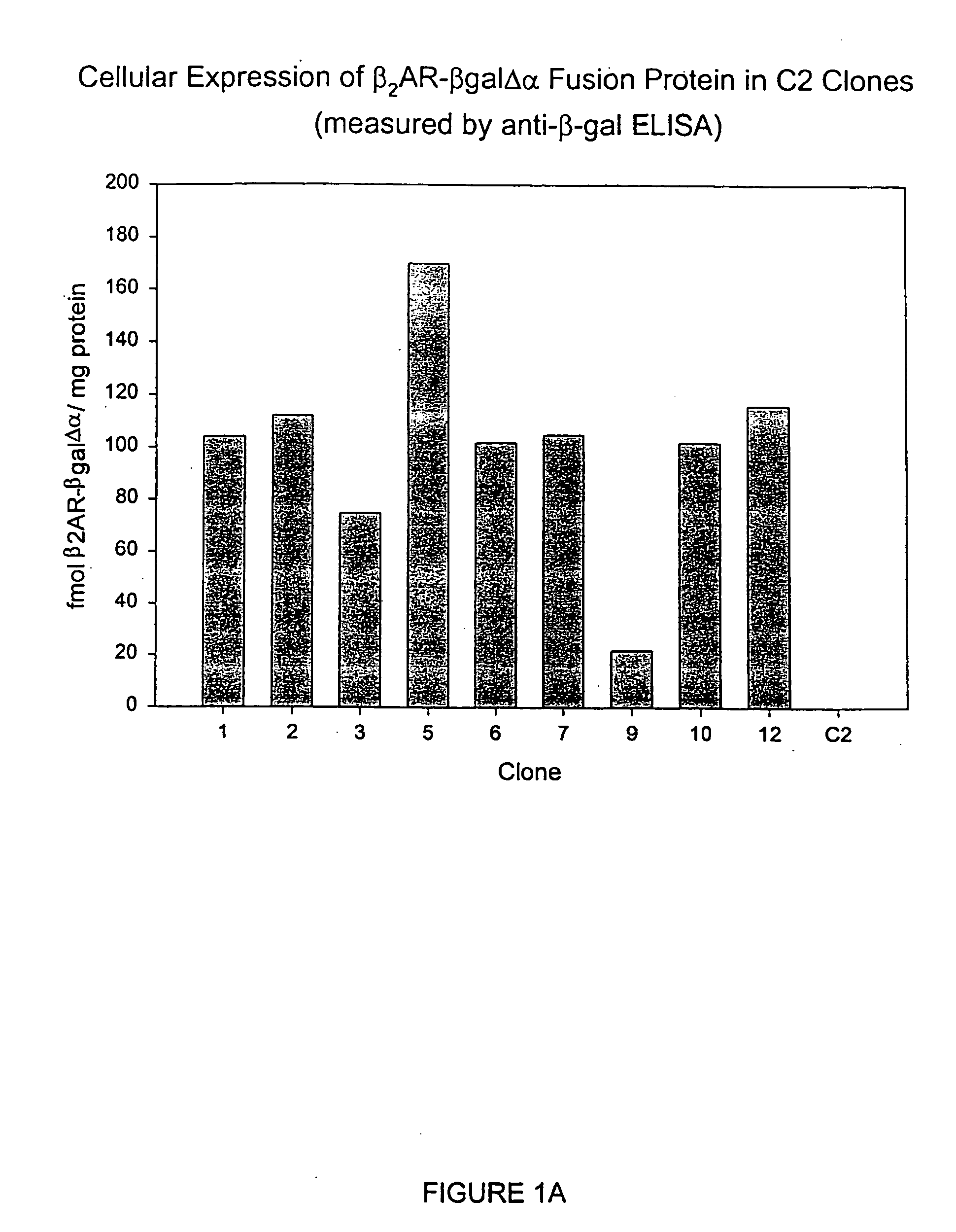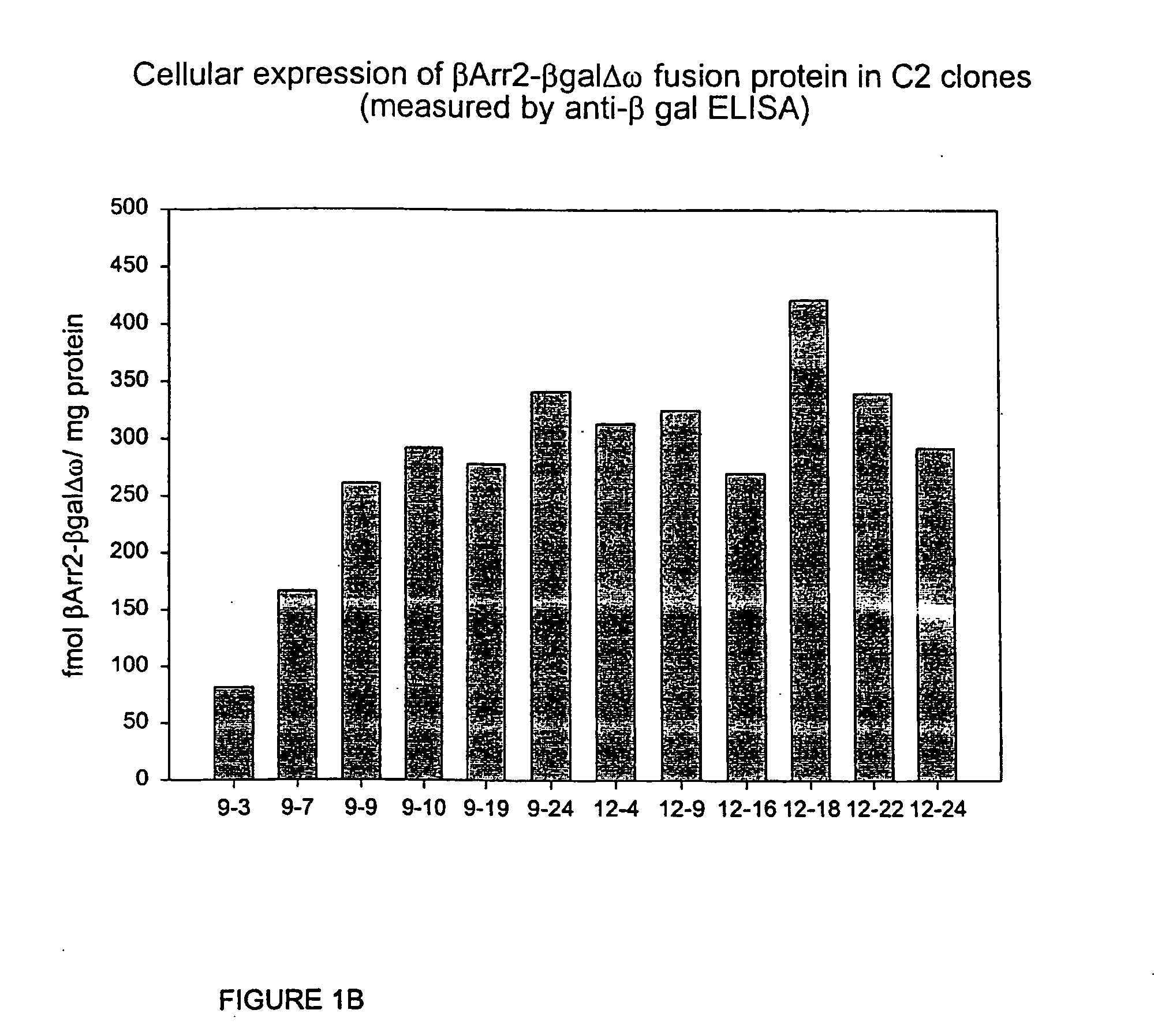Systems for sensitive detection of G-protein coupled receptor and orphan receptor function using reporter enzyme mutant complementation
a reporter enzyme and orphan receptor technology, applied in the field of detecting the activity of gpcr, can solve the problems of low throughput of prior art visualization or imaging assays, lack of thorough quantification, and lack of receptor kinases and arrestins involved in desensitization of gpcrs, so as to facilitate screening assays, enhance assay sensitivity, and enhance binding to activated gpcr
- Summary
- Abstract
- Description
- Claims
- Application Information
AI Technical Summary
Benefits of technology
Problems solved by technology
Method used
Image
Examples
example
[0114] An arrestin mutant fused to mutant reporter protein can be produced to enhance binding of the arrestin to an activated GPCR to enhance sensitivity of detection.
Experiment Protocol—
[0115] 1) In the first step, mutant β-arrestin2 constructions will be generated which include R170E / T / Y / or H, V165A, substitution of a.a 1-43with a.a. 1-47 of visual arrestin, or deletion of the C-terminal and combinations of these alterations. The mutant β-arrestin2 open reading frames will be cloned in frame with Δω-β-galactosidase in the pICAST OMC expression vector similar to cloning of the R170E β-arrestin2 mutation shown in FIG. 25.
[0116] 2) In the second step, mutant expression constructs will be transduced into a C2C12 my6blast cell line that has been engineered to express β2AR as a fusion to Δα-β-galactosidase. Following selection with antibiotic drugs, a population of clones expressing both fusion proteins will be obtained. Wild type and R170E β-arrestin2 constructions will be transduce...
PUM
| Property | Measurement | Unit |
|---|---|---|
| volume | aaaaa | aaaaa |
| reporter enzyme activity | aaaaa | aaaaa |
| affinity | aaaaa | aaaaa |
Abstract
Description
Claims
Application Information
 Login to View More
Login to View More - R&D
- Intellectual Property
- Life Sciences
- Materials
- Tech Scout
- Unparalleled Data Quality
- Higher Quality Content
- 60% Fewer Hallucinations
Browse by: Latest US Patents, China's latest patents, Technical Efficacy Thesaurus, Application Domain, Technology Topic, Popular Technical Reports.
© 2025 PatSnap. All rights reserved.Legal|Privacy policy|Modern Slavery Act Transparency Statement|Sitemap|About US| Contact US: help@patsnap.com



